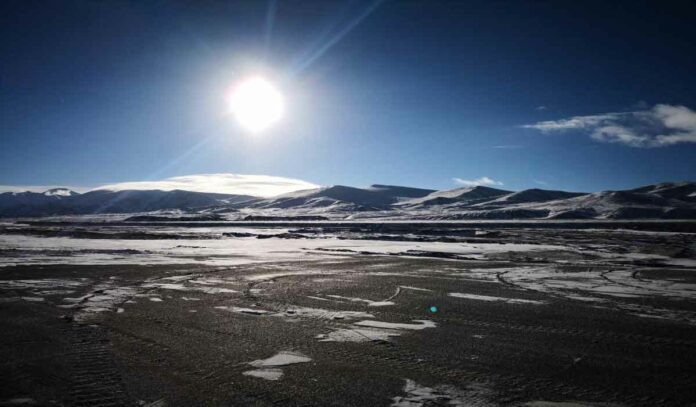Since the mid-1990s, the Tibetan Plateau has experienced significant warming and wetting. It had altered the thermal and hydrological properties of its frozen ground. Scientists wanted to discover that the dual effect of this wetting and the projected increase in precipitation over the Tibetan Plateau in the future is becoming a critical factor in determining the thermodynamics of the frozen ground. They have used the Community Land Surface Model for their study. The study was published in Advances in Atmospheric Sciences
Dr. Xuewei Fang of China’s Chengdu University of Information Technology’s School of Atmospheric Sciences explains, “In the face of the greatest increase in the occurrence frequency of heavy precipitation over the entire Tibetan Plateau, we need to address how warming and wetting might be jointly influencing the thermal responses of the permafrost and seasonally frozen ground to climate change.”
Dr. Fang and her colleagues classified the Tibetan Plateau into four zones based on average annual precipitation. They are namely arid (annual precipitation: 200 mm), semi-arid (annual precipitation: 200-400 mm), semi-humid (annual precipitation: 400-800 mm) and humid (annual precipitation: > 800 mm).
The results showed that the average annual air temperature and precipitation over the Tibetan Plateau increased by 0.72°C and 75.64 mm between 1961 and 1990. The arid and semi-arid zones warmed and became wetter. While the humid and semi-humid zones warmed but became drier.
The team also compared the freezing and thawing durations of the ground surface in the two periods. They discovered that wetting in drier regions prior to the 1990s prolonged the duration of the frozen ground’s freezing. While continuously wetting after the 1990s reduced the thawing period. This implies that significant wetting in arid areas has had the opposite warming effect on the permafrost body since the 1990s. The permafrost area was shrinking by 28% since then.
This finding contrasts with the frozen ground presented in wetter regions. The decline in precipitation in humid zones has significantly prolonged the thawing duration in seasonally frozen ground since the early 1990s. A drying and warming environment increases heat loss at the ground surface. It reduced heat supply for ice melting and extending the thawing process.
More information: Xuewei Fang et al, Response of Freezing/Thawing Indexes to the Wetting Trend under Warming Climate Conditions over the Qinghai -Tibetan Plateau during 1961–2010: A Numerical Simulation, Advances in Atmospheric Sciences (2022). DOI: 10.1007/s00376-022-2109-z

